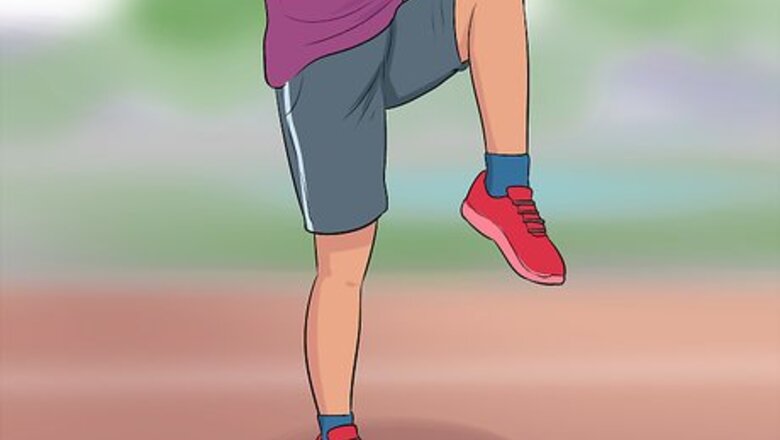
views
If you want to skip rocks instead, click here.If you'd like to learn to skip rope, click on click here.
Practicing Locomotive Skills
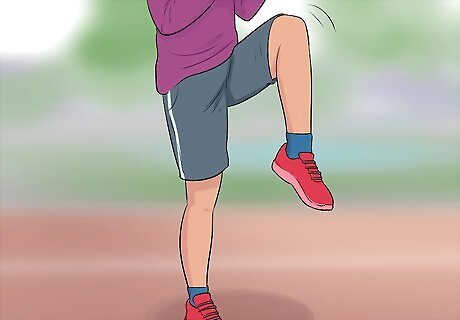
March with high knees. Locomotive skills are one of three essential motor skills; the other two being stability and manipulative skills. If skipping is difficult, then start with some of the more basic locomotive skills and work your way up. Marching with high knees mirrors the movement of skipping closely. Bring one foot up and bend at the knee to create a 90-degree angle. As you step forward, bring the other leg up in a quick motion. Keep your eyes focused forward and swing arms opposite of your feet. If the left foot is up in the air, the right arm should swing forward and vice versa.

Jump with both feet. Stand with feet close together and push off with both feet. Try lifting your feet off the ground at the same time. Practice landing quietly by landing on your toes and letting your ankles and knees bend. See how high you can jump. Add a jump rope and try jumping rhythmically. Extend your knees, ankles and hips as you jump. The main bounce should happen in your ankle. Activate the elasticity in your Achilles tendon as you jump up and down.

Hop one foot at a time. Learning to hop on one leg is a prerequisite skill to hopping. Lift one foot up, bending at the knee, and hold it there. Balance on your standing leg and try to stabilize by tightening the muscles in that leg. Once you have steadied yourself, lift off your heel and push off the ground with the ball of your foot. Try landing an inch or two forward back onto the ball of your foot. Keep yourself balanced by bringing your arms to your sides in a wide A shape. Switch feet and try balancing on the other foot.
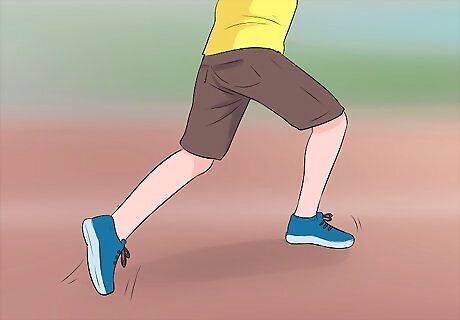
Practice galloping. Thrust your foot up and bend at the knee. Step forward with the lifted foot and shift your weight into the foot in front of you. Quickly close the gap between your feet by moving your back foot forward, so it rests just behind the front foot. Continue this motion forward with the same foot. Make sure you switch sides and gallop with your other foot. A gallop is nearly as difficult as skipping. Once you’ve mastered the gallop, you can then move on to skipping.
Skipping From Leg to Leg
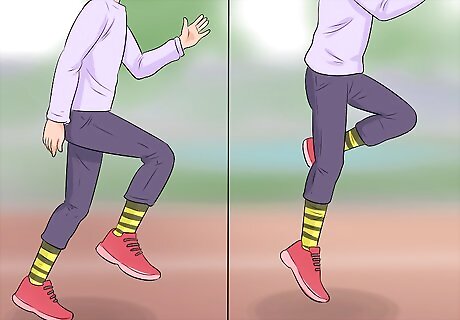
Step forward, then hop on that foot. The basic skipping motion is step, hop, step, hop. Start by stepping forward with one foot, then hopping on that same leg. It helps to step on just the balls of your feet, keeping your heel lifted. Push off your ball and propel yourself forward a few inches as you jump. Land lightly with bent knees. Point your toes in the direction you want to be skipping towards. Keep your head up and eyes forward. You may need to look at your legs as you get used to the motion, but eventually you should look up and ahead. Hold your abs in and chest up. Keeping a good posture will add height and distance to your skips. When you land, don't make a lot of noise. If the ground makes a loud noise when you land, you’re wasting too much energy. Keep control of the jump through your Achilles tendon and knees.
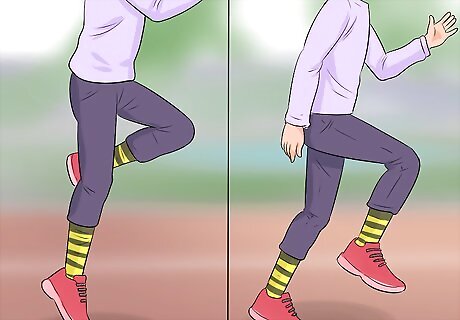
Repeat that motion on the other leg. After landing, step forward with the other leg and repeat the previous motion. Step on the ball of your foot, hop, then land lightly with a bent knee. Another way to think about skipping is to add hops in while marching. Practice marching with high knees. When you lift up one leg with knees bent, the standing leg should do a hop. Repeat on the other leg. Continue the march-hop motion in a series.
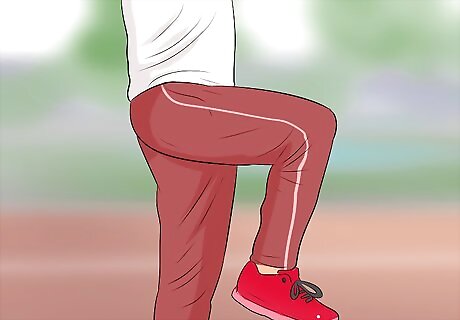
Lift and bend your non-stepping foot. Let your foot that isn't hopping go with the momentum by moving it forward and letting it rise about 45 degrees. To increase the energy of your hops, you can lift your knee to as much as a 90 degree angle.

Swing your arms in alternate directions. Getting your arm actions right has a small but important role in improving your jump performance. Keep your arms relaxed and let them swing with the momentum. Swing your arms forwards and backwards, not side to side, just as you do with walking. As your left knee pops up, swing your right arm forward, and vice versa.

Speed up as you get comfortable with the motion. Try going faster, increasing the distance between each skip, and jumping higher. If you’re having problems, try slowing down and doing it one foot at a time. You can skip in place by stepping on one foot, hopping straight up and down. Then shift your weight to the other foot and hopping straight up and down again. Once you get comfortable with this, try skipping in motion again.















Comments
0 comment